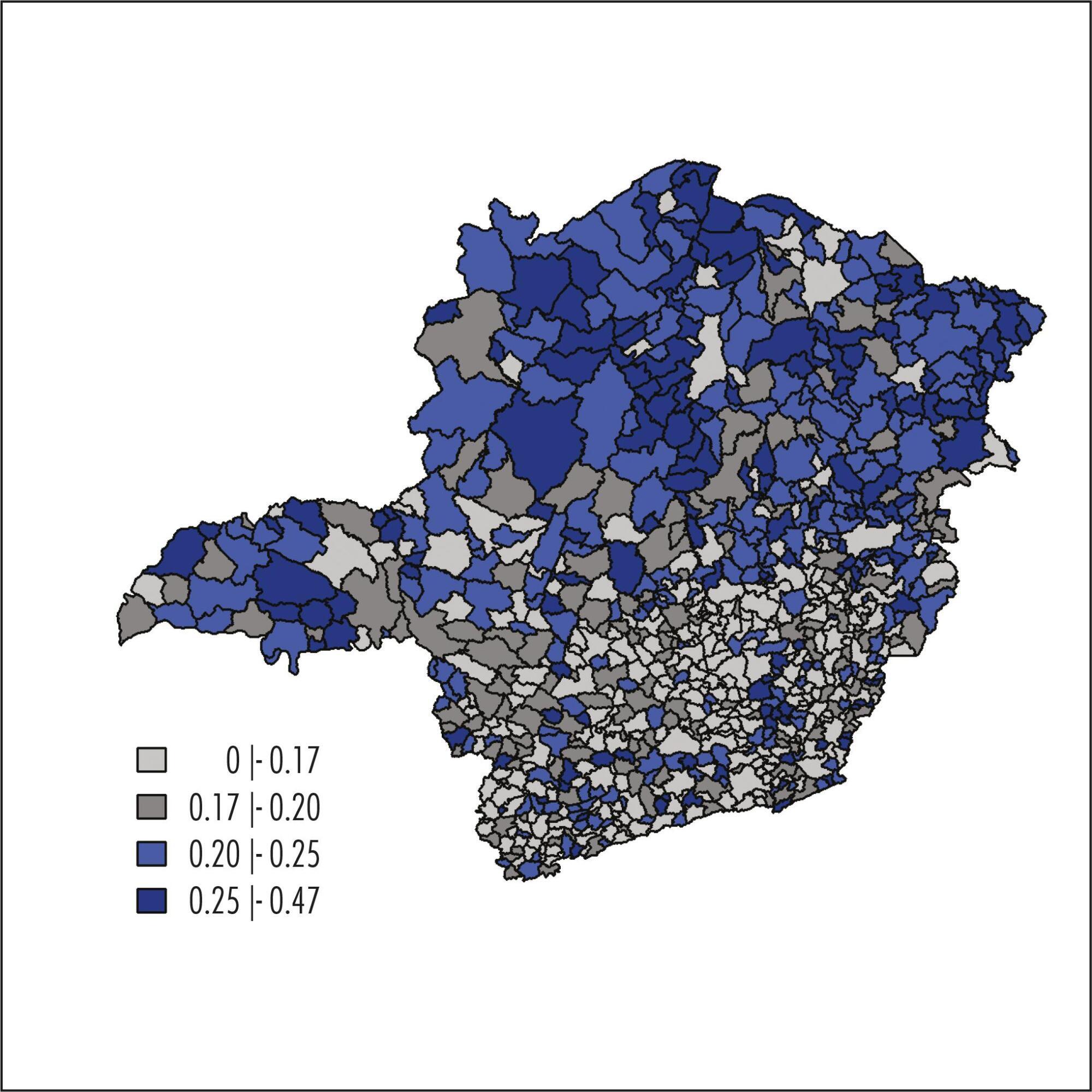Summary
Revista Brasileira de Ginecologia e Obstetrícia. 2015;37(8):366-373
08-01-2015
DOI 10.1590/SO100-720320150005420
To describe associations between pregnancy rates in adolescence and socioeconomic and social responsibility indicators in the municipalities of the State of Minas Gerais, Southeast of Brazil, in the year of 2010.
Ecological study using data from the Brazilian Live Birth Information System (SINASC). The percentage of live births to adolescent mothers (LBAM) for each municipality was calculated based on the quotient between number of born alive infants of mothers aged 10-19 years old and total number of live births in the year of 2010. Fully Bayesian models were used to obtain the percentages of LBAM adjusted for spatial effects and to assess possible associations with socioeconomic and social responsibility indicators.
The crude percentage of LBAM for the total number of live births in the municipalities of Minas Gerais in 2010 ranged from 0 to 46.4%, with median percentage being 19.6% and the first and third quartiles being 15.6 and 23.1%, respectively. This study has demonstrated a close relationship between adolescent pregnancy and socioeconomic indicators. LBAM percentages were found to be higher in municipalities with low population density, low human development index and other low development indicators.
The strong relationship between LBAM percentages and socioeconomic indicators suggests that adolescent pregnancy is more a social than a biological problem. Therefore, programs and actions should go beyond sexual education and information on preventive health methods.

Summary
Revista Brasileira de Ginecologia e Obstetrícia. 2008;30(5):248-255
08-15-2008
DOI 10.1590/S0100-72032008000500007
PURPOSE: to describe the socio-demographic characteristics of deaths caused by uterine cervix cancer in women living in Recife, Pernambuco, Brazil, from 2000 to 2004. METHODS: a transversal populational study, including 323 deaths by uterine cervix cancer, among which 261 were recorded in the Information System about Mortality and 62 were identified after investigation on deaths by cancer at non-specified sites of the uterus. Mortality rate for all the variables was obtained and statistics for central tendency and variance were calculated. The χ2 test was performed to obtain the mortality coefficient concerning the living place and age range of the patients. RESULTS: death among women under 60 (54.7%), black (60.5%), single (67.6%), housewives (71.2%) and the ones living in poor neighborhood (53.3%) preponderated. Most of deaths occurred in hospitals (85.1%) and 90.2% of them occurred inside national health system hospitals. The mortality coefficient varied from 0.3 (among women under 30) to 54.9/100.00 (among women over 80). Significant statistical differences (p<0.05) were evidenced when death linked to age range and sanitary district was compared to characteristics of the female population living in the city. CONCLUSIONS: in Recife, death by cervix cancer are more frequent among adult, black, single, housewives, women living in poor neighborhoods and attended to at national health system hospitals, with differences in death risk among age ranges and living place.